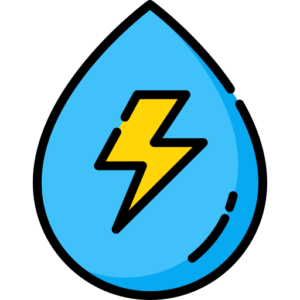LGSEC provides a voice for its members on crucial energy policy. Staff closely monitors proceedings of the California Public Utilities Commission, the California Energy Commission and the California Air Resources Board, and submits formal comments on issues that matter to the Coalition’s members. Our work ensures local governments have a regular presence with key regulatory agencies. When state laws and policies are converted into specific regulations and programs, LGSEC is there to provide a local government perspective and identify emerging challenges.
Regulatory Proceedings
Active Proceedings
View the proceedings LGSEC is actively engaged in. Find descriptions and LGSEC engagement, including submitted comments, for each proceeding. Click on the proceeding name to expand details.
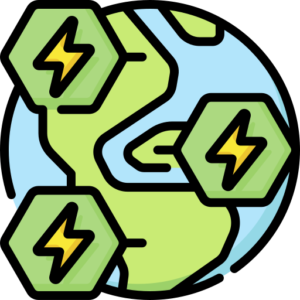 This Order Instituting Rulemaking considers changes to existing policies, procedures, and rules regarding the safety, reliability, and resiliency of electrical distribution systems.
This Order Instituting Rulemaking considers changes to existing policies, procedures, and rules regarding the safety, reliability, and resiliency of electrical distribution systems.
The Commission has many existing policies, procedures, and rules to exercise its authority and responsibility to promote the safety and reliability of the electrical distribution system. However, against the complex backdrop of a changing climate, several newly emerging threats and risks, as well as emerging priorities, necessitate a reexamination of current practices. These emergent threats and priorities include: (1) aging equipment; (2) extreme, climate-driven weather events; (3) evolving wildfire mitigation practices; (4) increased prioritization of equity; and (5) increased prioritization of electrification, which is a critical building block of the State’s strategic goal to decarbonize. Therefore, this rulemaking will be the venue for considering whether and how the Commission’s oversight of distribution safety, reliability, and resiliency should be updated in response to these emergent threats and priorities.
Engagement Completed
- Proceeding discussed in 2023 Service Capacity Working Group
- Comments Filed 7/05/2024
- Comments Filed 12/9/24
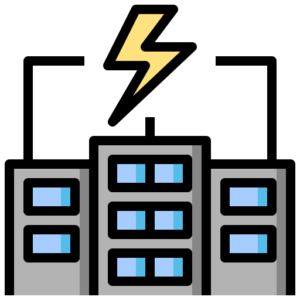 This rulemaking is opened to allow the Commission to provide guidelines and set timelines for the energization of electrical corporation customers. This rulemaking seeks to implement certain provisions of Senate Bill 410 (Stats. 2023, ch. 394) and Assembly Bill 50 (Stats. 2023, ch. 317), which require the Commission to establish reasonable average and maximum target energization time periods, and a procedure for customers to report energization delays to the Commission, among other requirements.
This rulemaking is opened to allow the Commission to provide guidelines and set timelines for the energization of electrical corporation customers. This rulemaking seeks to implement certain provisions of Senate Bill 410 (Stats. 2023, ch. 394) and Assembly Bill 50 (Stats. 2023, ch. 317), which require the Commission to establish reasonable average and maximum target energization time periods, and a procedure for customers to report energization delays to the Commission, among other requirements.
Engagement Completed
- Proceeding discussed in 2023 Service Capacity Working Group
- Comments Filed 6/26/2024
- Comments Filed 8/29/2024
 This rulemaking continues the Commission’s oversight of the development of infrastructure to support the acceleration of transportation electrification. This rulemaking also establishes a venue for considering future transportation electrification policy matters. This proceeding may consider the development of rates if a substantial need arises. This proceeding is the successor to Rulemaking (R.) 18-12-006.
This rulemaking continues the Commission’s oversight of the development of infrastructure to support the acceleration of transportation electrification. This rulemaking also establishes a venue for considering future transportation electrification policy matters. This proceeding may consider the development of rates if a substantial need arises. This proceeding is the successor to Rulemaking (R.) 18-12-006.
Engagement Completed
- 2020 Working Group (Under R.18-12-006)
- Comments Filed 8/12/20 (Under R.18-12-006)
- Comments Filed 6/21/21 (Under R.18-12-006)
- Comments Filed 6/28/21 (Under R.18-12-006)
- 2024 Working Group (Under R.23-12-008)
- On November 23, 2022, the Commission issued an Order Instituting Rulemaking (OIR) to achieve consistency of cost effectiveness assessments, improve data access and use, and consider equipment performance standards for distributed energy resource (DER) customer programs. As a successor proceeding to Rulemaking (R.) 14-10-003, this rulemaking is the procedural framework for advancing the vision articulated in the customer programs track of the Commission’s DER Action Plan 2.0, which states:
- “The DER Action Plan’s Customer Programs Track focuses on improving coordination, planning and developing consistent metrics across DER proceedings related to customer programs to maximize their contributions to [greenhouse gas (GHG)] reductions and other state energy goals. The goal is to enable all customers to effectively manage their energy usage in a manner that ensures equitable participation and distribution of benefits, alignment with evolving rate design and load flexibility, alignment with distribution planning objectives, and alignment with integrated resource planning objectives.”
- A pre-hearing conference (PHC) was held on March 29, 2023, to address the issues of law and fact, determine the need for hearing, set the schedule for resolving the matter, and address other matters as necessary.
Engagement Completed
- Should the California Public Utilities Commission (CPUC) investigate how to redefine electric distribution investor-owned utility (IOU) roles to accommodate a high DER future, limit market power, and ensure open access for DER providers and aggregators offering retail and wholesale grid services? If so, how?
- How frequent should distribution planning consultations be and at what level of local government (e.g., city or county level)? What should be the scope of outreach, including to tribal governments?
- Should Distribution Planning Process (DPP) outreach be coordinated and/or combined with associated community engagement activities (e.g., those required by the wildfire mitigation, de-energization, microgrids and resiliency, climate adaptation, and/or other proceedings)?
- Should DPP outreach play a role in supporting development of community-scale DERs (i.e., DERs smaller than utility scale but significantly larger than typical single-customer residential DERs).
Engagement Completed
- 2021 Working Group
- Comments Filed 8/17/2021
- Comments Filed 9/29/2023
- Comments Filed 10/30/2023
- Proceeding discussed in 2023 Service Capacity Working Group
- Comments Filed 6/26/2024
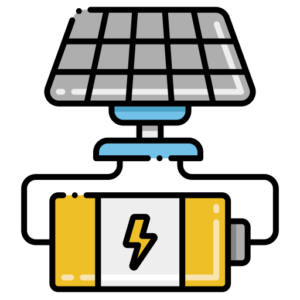 Two related processes are extant, as follows: (1) Through a series of formal comments, workshops, advice letters, and California Public Utilities Commission (CPUC) reports this docket focuses on how to encourage microgrid deployment while maintaining grid integrity. (2) Pacific Gas and Electric, San Diego Gas and Electric, and Southern California Edison (“utilities”) are soliciting input through a series of workshops on the elements necessary to develop a new $200 million Microgrid Incentive Program intended to support energy resilience for vulnerable populations impacted by grid outages.
Two related processes are extant, as follows: (1) Through a series of formal comments, workshops, advice letters, and California Public Utilities Commission (CPUC) reports this docket focuses on how to encourage microgrid deployment while maintaining grid integrity. (2) Pacific Gas and Electric, San Diego Gas and Electric, and Southern California Edison (“utilities”) are soliciting input through a series of workshops on the elements necessary to develop a new $200 million Microgrid Incentive Program intended to support energy resilience for vulnerable populations impacted by grid outages.
Engagement Completed
- 2020 Working Group
- 2021 Working Group
- Comments filed 1/29/2020
- Comments filed 8/13/2020
- Protest Letter 2/16/2021
- SCE Response 2/23/2021
- CPUC Response 4/13/2021
- Informal Comment Letter to CPUC Staff 6/16/21
- Joint Comments filed 11/10/2021
- Joint Parties Motion filed 10/31/2023
- Joint Parties Motion filed 12/22/2023
- Comments filed 1/12/2024
- Reply Comments filed 1/26/2024
Proceedings LGSEC is Monitoring or Supporting
Find descriptions, schedules, and engagement, including submitted comments, for each proceeding. Click on the proceeding name to expand details.
 This rulemaking is initiated for four main purposes: 1) to implement Senate Bill 355 (Stats. 2023, Ch. 393) and consider other modifications to the Solar on Multifamily Affordable Housing program; 2) to consider modifications to the Disadvantaged Communities Single-Family Affordable Solar Homes program; 3) to consider modifications to and establish programmatic procedural oversight of Renewable Energy Self-Generation Bill Credit Transfer tariffs; and 4) to consider modifications to and establish programmatic procedural oversight of several small multi-jurisdictional utility solar programs and tariffs. We intend to coordinate this rulemaking closely with other related proceedings, including Rulemaking (R.) 20-05-012 on the Self-Generation Incentive Program, R.17-07-007 on Electric Rule 21 and the interconnection of distributed generation resources, and R.22-11-013 on Distributed Energy Resources customer programs.
This rulemaking is initiated for four main purposes: 1) to implement Senate Bill 355 (Stats. 2023, Ch. 393) and consider other modifications to the Solar on Multifamily Affordable Housing program; 2) to consider modifications to the Disadvantaged Communities Single-Family Affordable Solar Homes program; 3) to consider modifications to and establish programmatic procedural oversight of Renewable Energy Self-Generation Bill Credit Transfer tariffs; and 4) to consider modifications to and establish programmatic procedural oversight of several small multi-jurisdictional utility solar programs and tariffs. We intend to coordinate this rulemaking closely with other related proceedings, including Rulemaking (R.) 20-05-012 on the Self-Generation Incentive Program, R.17-07-007 on Electric Rule 21 and the interconnection of distributed generation resources, and R.22-11-013 on Distributed Energy Resources customer programs.
 This rulemaking is initiated to develop and refine policies, procedures and rules for the Self-Generation Incentive Program (SGIP) and, to a lesser extent, the California Solar Initiative (CSI). The purpose of the rulemaking is to ensure the effectiveness of programs and policies to promote customer renewable generation and energy storage systems in compliance with statute. To accomplish this, this rulemaking will initially focus on SGIP requirements for behind-the-meter renewable generation and heat pump water heater technologies. The rulemaking will subsequently consider the greenhouse gas emissions (GHG) performance of energy storage systems using SGIP incentives and may consider the GHG performance of energy storage systems installed without SGIP incentives. The rulemaking will consider other matters regarding the ongoing implementation of Public Utilities Code Sections 379.6 and 379.9 as they arise.
This rulemaking is initiated to develop and refine policies, procedures and rules for the Self-Generation Incentive Program (SGIP) and, to a lesser extent, the California Solar Initiative (CSI). The purpose of the rulemaking is to ensure the effectiveness of programs and policies to promote customer renewable generation and energy storage systems in compliance with statute. To accomplish this, this rulemaking will initially focus on SGIP requirements for behind-the-meter renewable generation and heat pump water heater technologies. The rulemaking will subsequently consider the greenhouse gas emissions (GHG) performance of energy storage systems using SGIP incentives and may consider the GHG performance of energy storage systems installed without SGIP incentives. The rulemaking will consider other matters regarding the ongoing implementation of Public Utilities Code Sections 379.6 and 379.9 as they arise.
 On July 14, 2022, the Commission issued an Order Instituting Rulemaking to establish this proceeding to establish demand flexibility policies and modify electric rates to advance the following objectives: (a) enhance the reliability of California’s electric system; (b) make electric bills more affordable and equitable; (c) reduce the curtailment of renewable energy and greenhouse gas emissions associated with meeting the state’s future system load; (d) enable widespread electrification of buildings and transportation to meet the state’s climate goals; (e) reduce long-term system costs through more efficient pricing of electricity; and (f) enable participation in demand flexibility by both bundled and unbundled customers.
On July 14, 2022, the Commission issued an Order Instituting Rulemaking to establish this proceeding to establish demand flexibility policies and modify electric rates to advance the following objectives: (a) enhance the reliability of California’s electric system; (b) make electric bills more affordable and equitable; (c) reduce the curtailment of renewable energy and greenhouse gas emissions associated with meeting the state’s future system load; (d) enable widespread electrification of buildings and transportation to meet the state’s climate goals; (e) reduce long-term system costs through more efficient pricing of electricity; and (f) enable participation in demand flexibility by both bundled and unbundled customers.
Proceeding Schedule
| Track A Event | Date |
| Workshop on income-graduated fixed charge and other Track A issues | November 29, 2022 |
| Ruling with staff guidance for parties’ Track A proposals | December 2022 |
| Concurrent opening testimony of parties with income-graduated fixed charge proposals | March 17, 2023 |
| Reply testimony | April 28, 2023 |
| Joint case management statement served by PG&E | July 14, 2023 |
| Evidentiary hearing, if needed | Late August 2023 |
| Opening briefs (if no hearings) | August 25, 2023 |
| Reply briefs (if no hearings) | September 29, 2023 |
| Opening briefs (if hearings) | September 29, 2023 |
| Reply briefs (if hearings) | October 27, 2023 |
| Proposed decision (if no hearings) | January 2024 |
| Proposed decision (if hearings) | February 2024 |
| Track B Event | Date |
| Workshop on electric rate design principles and demand flexibility rate design principles | November 17, 2022 |
| Energy Division forms Working Groups 1 and 2 | November 2022 |
| Comments on scoping memo and ruling | December 2, 2022 |
| Reply testimony | April 28, 2023 |
| Replies to comments on scoping memo and ruling | January 4, 2023 |
| Proposed decision on electric rate design principles and demand flexibility design principles | March 2023 |
| Workshop on expanding existing pilots | Quarter 2 of 2023 |
| Post-workshop ruling requesting comments on expanding pilots | Quarter 2 of 2023 |
| Working Group 1 and 2 proposals and reports filed by SCE | October 2, 2023 |
| Workshop on Working Group proposals, including consideration of the barriers and needs of low-income and disadvantaged communities | October 2023 |
| Comments on Working Group 1 and 2 proposals | October 30, 2023 |
| Reply comments on Working Group 1 and 2 proposals | November 22, 2023 |
| Proposed decision on remaining issues | March 2024 |
 Senate Bill 1389 requires the CEC to: “Conduct assessments and forecasts of all aspects of energy industry supply, production, transportation, delivery and distribution, demand, and prices. The Energy Commission shall use these assessments and forecasts to develop energy policies that conserve resources, protect the environment, ensure energy reliability, enhance the state’s economy, and protect public health and safety.” (Pub. Res. Code § 25301(a)). The CEC adopts an Integrated Energy Policy Report (IEPR) every two years and an update every other year. This proceeding covers the 2021 Integrated Energy Policy Report Update.
Senate Bill 1389 requires the CEC to: “Conduct assessments and forecasts of all aspects of energy industry supply, production, transportation, delivery and distribution, demand, and prices. The Energy Commission shall use these assessments and forecasts to develop energy policies that conserve resources, protect the environment, ensure energy reliability, enhance the state’s economy, and protect public health and safety.” (Pub. Res. Code § 25301(a)). The CEC adopts an Integrated Energy Policy Report (IEPR) every two years and an update every other year. This proceeding covers the 2021 Integrated Energy Policy Report Update.
-
Engagement Completed
- Energy Efficiency Working Group 2013
- Energy Efficiency Working Group 2014
- Energy Efficiency Working Group 2015
- Energy Efficiency Working Group 2016
- Prehearing Statement Filed 12/6/13
- Comments Filed 4/4/14
- Comments Filed 9/8/15
- Response Letter 7/14/16
- Motion of leave 7/14/16
- Comments Filed 6/17/16
- Comments Filed 8/8/16
- Comments Filed 2/26/16
- Comments Filed 11/12/19
- Comments Filed 10/16/20
- Comments Filed 10/30/20
- Comments Filed 5/6/21
- Join Comments Filed 6/20/22
- Comments Filed 8/9/22
- Comments Filed 9/23/22
- Comments Filed 1/13/23
The CEC recognizes there is a need for a forum for the CEC to gather information, identify gaps in information, have a discussion, and establish a record of input from multiple perspectives, including those of environmental justice and environmental groups, California Native American tribes, consumer advocates, labor groups, industry groups, academia, the public, and others on the role of NEBs and social costs in CEC analyses, policies, and programs. The CEC may also consider how other federal, state, or local agencies incorporate NEBs and social costs into their policies, programs and analyses. The CEC can use findings from this Informational Proceeding to develop NEB and social cost methodologies for CEC analyses, policies, and programs. The length of time it will take to conduct meaningful public engagement will limit the ability of the OIIP to inform the 2025 Report, but CEC staff will consider any available information and findings from this OIIP to inform the 2025 Report. Findings and methodologies utilized in the 2025 Report can inform the OIIP.
This proceeding has the opportunity to include extensive engagement, including workshops, working groups, and other forums, as well as outreach to communities and community-based organizations with more flexible and accessible engagement options than a regulatory proceeding. This OIIP will facilitate information exchange from different perspectives. The CEC may also launch phases within the informational proceeding to further focus the proceeding’s scope and to address new or emerging issues.
Engagement Completed
 Senate Bill (SB) 100 established a landmark policy requiring renewable energy and zero-carbon resources supply 100 percent of electric retail sales to end-use customers by 2045. It requires the California Energy Commission (CEC), California Public Utilities Commission (CPUC), and California Air Resources Board (CARB) to prepare a report.
Senate Bill (SB) 100 established a landmark policy requiring renewable energy and zero-carbon resources supply 100 percent of electric retail sales to end-use customers by 2045. It requires the California Energy Commission (CEC), California Public Utilities Commission (CPUC), and California Air Resources Board (CARB) to prepare a report.
Engagement Completed
The Community Energy Resilience Investment (CERI) program will fund projects across California that increase community energy resilience and reliability, advance state energy and climate goals, improve energy justice and equity, and create good-paying jobs.
Engagement Completed
Inactive Proceedings
View the proceedings LGSEC has engaged with in the past. The comments submitted for each are included. Click on the proceeding name to expand details.
- What actions, if any, should the Commission take to mitigate future increases in energy costs, rates and bills?
- What actions, if any, should the Commission recommend other entities take to mitigate future increases in energy costs, rates and bills?
Proceeding Schedule
| Event | Date |
| Amended Scoping Memo, Issued | January 2022 |
| Electric and Gas Rates En Banc, HoldFebruary/March 2022 | February/March 2022 |
| Ruling Soliciting Recommendations and Considerations on Proposed Strategies to Mitigate Energy Rate Increases, Issue | March/April 2022 |
| Party Recommendations, File and Serve | May 2022 |
| Workshop based on Party Recommendations and Considerations, Hold | July 2022 |
| Party Opening and Reply Comments on Recommendations, File and Serve | August/September 2022 |
| Staff Proposal on Recommended Strategies to Mitigate Energy Rate Increases, Issue | Q1 2023 |
| Workshop on Staff Proposal, Hold | Q1 2023 |
| Reply Comments on Staff Proposal, File and Serve | Q2 2023 |
| Phase 3 Proposed Decision, Issue | Q2-Q3 2023 |
 Sunnova Community Microgrids California, LLC (“SCMC”) submits application for a Certificate of Public Convenience and Necessity (“CPCN”) authorizing the construction and operation of public utility microgrids by SCMC in the State of California and to establish rates for service. SCMC requests approval from the Commission to own and operate microgrids to be constructed as part of new master-planned residential communities consisting of between approximately 500 to 2,000 new homes and select non-residential facilities that are colocated in or an essential part of the community plan (e.g., streetlights, community buildings, electric vehicle charging stations, schools, libraries, and parks).2
Sunnova Community Microgrids California, LLC (“SCMC”) submits application for a Certificate of Public Convenience and Necessity (“CPCN”) authorizing the construction and operation of public utility microgrids by SCMC in the State of California and to establish rates for service. SCMC requests approval from the Commission to own and operate microgrids to be constructed as part of new master-planned residential communities consisting of between approximately 500 to 2,000 new homes and select non-residential facilities that are colocated in or an essential part of the community plan (e.g., streetlights, community buildings, electric vehicle charging stations, schools, libraries, and parks).2
-
Engagement Completed
 Through this Application, the CPUC aims to decide whether SCE’s proposed Building Electrification program is reasonable, including but not limited to funding sources, budget, and design and implementation; whether the cost recovery proposal and customer impacts of SCE’s proposed Building Electrification programs are reasonable; and whether SCE’s proposed Building Electrification programs help reach Environmental and Social Justice (ESJ) Communities, as defined in the Commission’s ESJ Action Plan, and safety goals.
Through this Application, the CPUC aims to decide whether SCE’s proposed Building Electrification program is reasonable, including but not limited to funding sources, budget, and design and implementation; whether the cost recovery proposal and customer impacts of SCE’s proposed Building Electrification programs are reasonable; and whether SCE’s proposed Building Electrification programs help reach Environmental and Social Justice (ESJ) Communities, as defined in the Commission’s ESJ Action Plan, and safety goals.
Proceeding Schedule
| Event | Date |
| Application filed | December 20, 2021 |
| Protests / Responses Due | January 20, 2022 |
| Reply to Protests | January 31, 2022 |
| SCE-Scheduled Meet & Confer | March 8, 2022 |
| Pre-Hearing Conference (PHC) | March 24, 2022 |
| SCE hosts virtual meeting with parties to walkthrough SCE workpapers | March 29, 2022 |
| Scoping Memo Issued* | April 5, 2022 |
| Intervenor Testimony due: (6 weeks after scoping memo) | May 17, 2022 |
| SCE Rebuttal Testimony due (8 weeks after intervenor testimony) | July 12, 2022 |
| Deadline for Stipulations / Requests to limit hearings (2 weeks after previous deadline) | July 26, 2022 |
| Hearings held (if needed) (2 weeks after previous deadline) | August 9, 2022 |
| Concurrent Opening Briefs (4 weeks after end of hearings deadline) | September 6, 2022 |
| Concurrent Reply Briefs (3 weeks after opening briefs) | September 27, 2022 |
| Proposed Decision | October 2022 |
| Comments on Proposed Decision (20 days from the date of issuance) | November 2022 |
| Replies to Comments (5 days later) | November 2022 |
| Final Commission Decision |
October 27, 2023
|
Engagement Completed
 This proceeding focuses on identifying improvements and possible additions to existing means of financing energy management, efficiency, and electrification, DER, and microgrid investments. The proceeding could result in expanded access to energy financing measures by local governments and their residents.
This proceeding focuses on identifying improvements and possible additions to existing means of financing energy management, efficiency, and electrification, DER, and microgrid investments. The proceeding could result in expanded access to energy financing measures by local governments and their residents.
Proceeding Schedule
| Event |
Date |
| Amended Scoping Memo and revised schedule for new financing proposals, metrics, and evaluation strategies | November 2021 |
| Workshop(s) to receive public feedback to utilities’ initial high-level proposals addressing template | Q1 2022 |
| Proposals for clean energy financing programs filed and served by IOUs and other parties | April 15, 2022 |
| IOU-hosted community meetings on proposed clean energy financing options | May 2022 |
| Revisions to IOU proposals and IOU reports on community meeting feedback due | June 15, 2022 |
| Workshop(s) discussing metrics, reporting, and evaluation requirements | Q2 2022 |
| Workshop(s) for discussion of outstanding issues related to clean energy financing program proposals, if needed | Q3 2022 |
| Opening comments on IOU and party clean energy financing proposals due | June 29, 2022 |
| Deadline for parties to request evidentiary hearing | June 29, 2022 |
| Reply comments on IOU and party clean energy financing proposals due | July 11, 2022 |
| Proposed decision | September 2022 |
| Commission decision | 30 days after issuance of PD |
Engagement Completed
- 2020 Working Group
- 2021 Working Group
- 2022 Working Group
- Workshop Proposal Presentation 3/25/2022
- Proposal to Pilot a Decarbonization Rate 4/15/2022
- Final Proposal for Pilot Decarbonization Rate 6/15/2022
- Reply Comments 7/22/2022
 Customers who install small solar, wind, biogas, and fuel cell generation facilities to serve all or a portion of onsite electricity needs are eligible for the state’s net metering program. NEM allows customers who generate their own energy (“customer-generators”) to serve their energy needs directly onsite and to receive a financial credit on their electric bills for any surplus energy fed back to their utility. Participation in the NEM does not limit a customer-generator’s eligibility for any other rebate, incentive, or credit provided by an electric utility. More than 90% of all megawatts (MW) of customer-sited solar capacity interconnected to the grid in the three large investor-owned (IOU) territories (PG&E, SCE, and SDG&E) in California are on NEM tariffs. R. 20-08-020 focuses on reforming the payment system through which photovoltaics developed by non-utilities are compensated.
Customers who install small solar, wind, biogas, and fuel cell generation facilities to serve all or a portion of onsite electricity needs are eligible for the state’s net metering program. NEM allows customers who generate their own energy (“customer-generators”) to serve their energy needs directly onsite and to receive a financial credit on their electric bills for any surplus energy fed back to their utility. Participation in the NEM does not limit a customer-generator’s eligibility for any other rebate, incentive, or credit provided by an electric utility. More than 90% of all megawatts (MW) of customer-sited solar capacity interconnected to the grid in the three large investor-owned (IOU) territories (PG&E, SCE, and SDG&E) in California are on NEM tariffs. R. 20-08-020 focuses on reforming the payment system through which photovoltaics developed by non-utilities are compensated.
Proceeding Schedule
| Event | Date |
| Comments on Guiding Principles Received | December 4, 2020 |
| Reply Comments on Guiding Principles Received | December 11, 2020 |
| Proposed Decision on Guiding Principles Issued | January 5, 2020 |
| Issuance of NEM2 Lookback Study | January 21, 2021 |
| Workshop on E3 White Paper and Program Elements | February 8, 2021 |
| Decision on Guiding Principles Issued | February 17, 2021 |
| Party Proposals Served | March 15, 2021 |
| Workshop Presenting Party Proposals | March 23-24 |
| Second Workshop on Proposals | April 22, 2021 |
| Cost Effectiveness Analysis Results Provided to Parties | May 28, 2021 |
| Opening Testimony on Issues 2 -6 | June 18, 2021 |
| Rebuttal Testimony | July 16, 2021 |
| Evidentiary Hearing on Issues 3 – 6 | July 26 – August 6, 2021 |
| Completion of Settlement Talks | August 27, 2021 |
| Opening Briefs on Issues 2-6 | August 31, 2021 |
| Reply brief [matter submitted] | September 14, 2021 |
| Proposed Decision (PD) on successor to current main NEM tariff and NEM tariff for fuel cells |
[no later than December 13, 2021 (90 days after
reply briefs submission)]
|
| Commission Decision | [at least 30 days after PD] |
Engagement Completed
- 2021 Working Group
- Public Comments 9/21/2021
- Public Comments 1/14/2022
 In 2006, the Legislature passed the California Global Warming Solutions Act of 2006 [Assembly Bill 32 (AB 32)], which created a comprehensive, multi-year program to reduce greenhouse gas emissions in California. The Draft 2022 Scoping Plan assesses progress toward the statutory 2030 target, while laying out a path to achieving carbon neutrality no later than 2045.
In 2006, the Legislature passed the California Global Warming Solutions Act of 2006 [Assembly Bill 32 (AB 32)], which created a comprehensive, multi-year program to reduce greenhouse gas emissions in California. The Draft 2022 Scoping Plan assesses progress toward the statutory 2030 target, while laying out a path to achieving carbon neutrality no later than 2045.
Engagement Completed
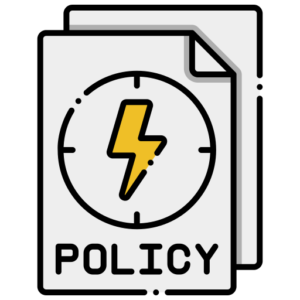 The CEC adopts an Integrated Energy Policy Report (IEPR) every two years and an update every other year. This proceeding covers the 2021 Integrated Energy Policy Report Update. The IEPR provides a cohesive approach to identifying and solving the state’s pressing energy needs and issues. The report, which is crafted in collaboration with a range of stakeholders, develops and implements energy plans and policies.
The CEC adopts an Integrated Energy Policy Report (IEPR) every two years and an update every other year. This proceeding covers the 2021 Integrated Energy Policy Report Update. The IEPR provides a cohesive approach to identifying and solving the state’s pressing energy needs and issues. The report, which is crafted in collaboration with a range of stakeholders, develops and implements energy plans and policies.
Engagement Completed
- 2021 Working Group
Engagement Completed
- Comments Filed 2/8/19
- 2020 Working Group
- Comments Filed 2/19/20
- Comments Filed 2/26/20
- Comments Filed 4/17/20
Engagement Completed
Engagement Completed
Engagement Completed
Engagement Completed
 The 2016 Building Energy Efficiency Standards apply to new construction of, and additions and alterations to, residential and nonresidential buildings. The 2016 Standards took effect January 1, 2017. The California Energy Commission updates the Building Energy Efficiency Standards every three years.
The 2016 Building Energy Efficiency Standards apply to new construction of, and additions and alterations to, residential and nonresidential buildings. The 2016 Standards took effect January 1, 2017. The California Energy Commission updates the Building Energy Efficiency Standards every three years.
Engagement Completed
Engagement Completed
Engagement Completed
- Comments on Draft Plan 4/21/15
- Comments Filed 5/21/15
- Comments Filed 7/20/15
- 2021 Working Group


